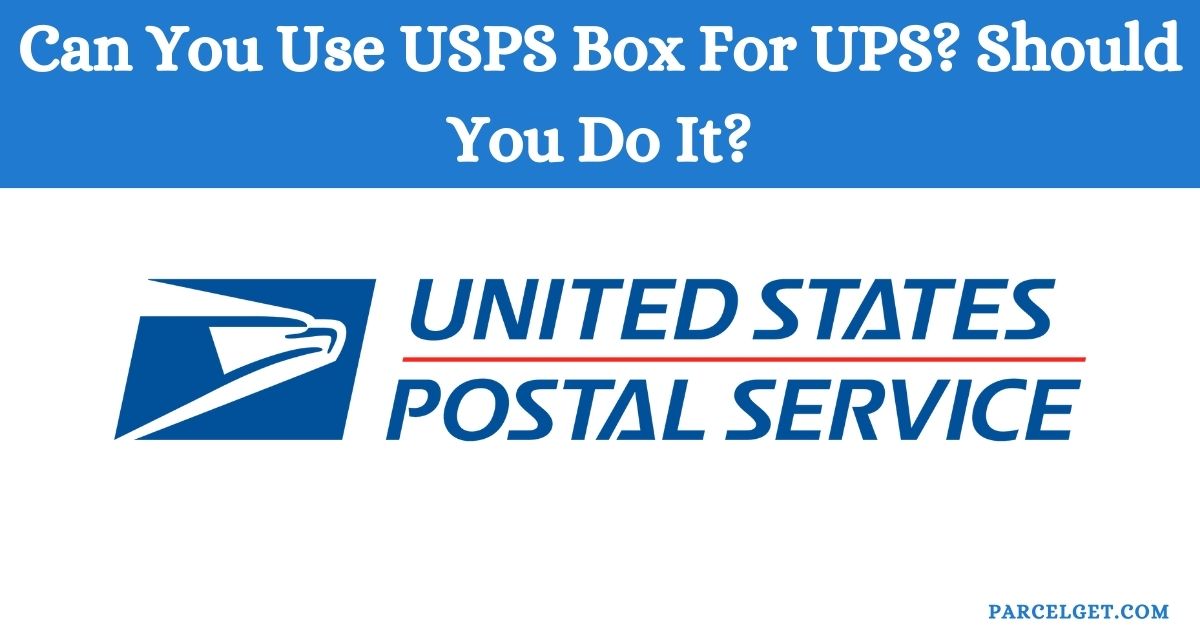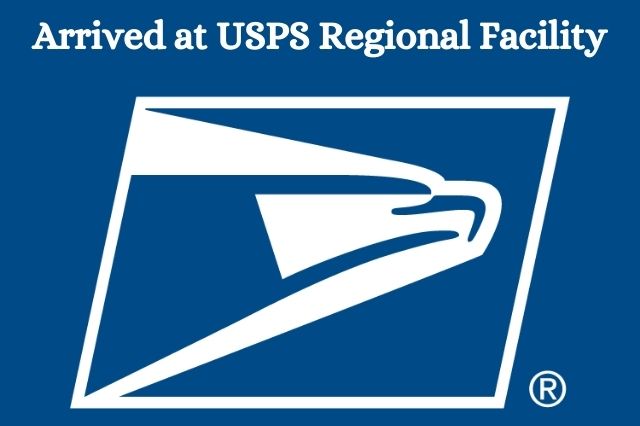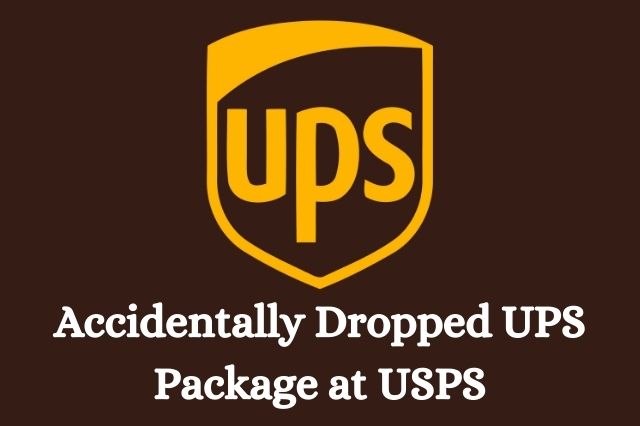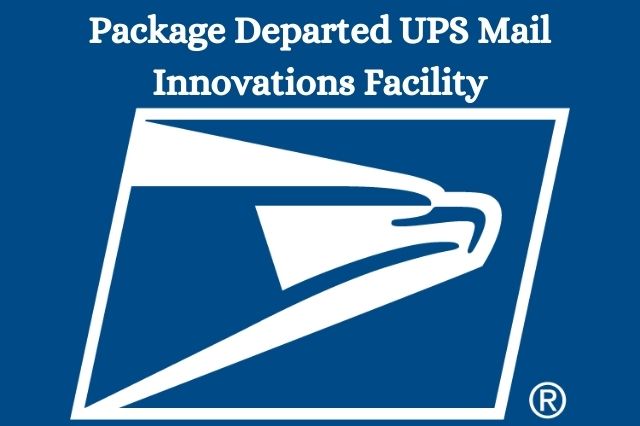Repurposing USPS boxes for UPS shipments is a common consideration among shippers seeking cost-effective and sustainable packaging solutions. However, it is crucial to evaluate the compatibility between the two carriers’ packaging standards.
This article explores the feasibility of using USPS boxes for UPS and highlights key factors to consider. It addresses potential challenges and providing insights into whether it is a recommended practice. Hover down to the main details.

Can you use USPS box for UPS?
Using a USPS box for UPS shipments is a common inquiry among shippers seeking to repurpose packaging materials. Generally, it is not recommended to use USPS boxes for UPS shipping due to differences in packaging standards and carrier-specific guidelines.
USPS and UPS have distinct packaging requirements and shipping regulations. While some may assume that all cardboard boxes are interchangeable, mismatching carriers can lead to potential issues during the shipping process.
UPS may refuse packages in USPS boxes, and using the wrong packaging might result in additional fees or delays. It is crucial for shippers to adhere to each carrier’s guidelines to ensure a smooth shipping experience.
While there might be instances where using a USPS box for UPS seems feasible, it is advisable to choose packaging materials compliant with UPS standards to avoid complications. Shippers should prioritize understanding the distinct guidelines of each carrier and consider using UPS-supplied materials or other suitable alternatives.
What is USPS Packaging Box Standards?
USPS packaging box standards encompass a set of guidelines and specifications that dictate the acceptable parameters for packaging materials used. USPS provides a range of free packaging options for Priority Mail and Priority Mail Express services.
It is designed to ensure the safe and efficient transport of various items. These boxes are available in different sizes and shapes, catering to diverse shipping needs. The standards define the permissible dimensions, weight limits, and construction requirements for USPS packaging.
Adhering to these standards is crucial for both shippers and recipients to guarantee the proper handling of packages throughout the postal network. USPS packaging is specifically engineered to meet the demands of their delivery processes.
Understanding and complying with USPS packaging box standards is essential for accurate postage calculation. Shippers utilizing USPS services are encouraged to familiarize themselves with the packaging guidelines to ensure their parcels meet the necessary specifications.
What is UPS Packaging Box Standards?
UPS packaging box standards delineate the specifications and guidelines that govern the acceptable parameters for packaging materials used in shipments. UPS provides a variety of packaging options designed to cater to the diverse needs of shippers.
These packaging standards encompass considerations such as size, weight, and durability. UPS emphasizes the importance of using appropriate packaging to protect the contents during transit. Shippers are encouraged to adhere to UPS packaging box standards to minimize the risk of damage and ensure efficient handling throughout the shipping process.
These standards also contribute to accurate rate calculations, as package dimensions and weight play a crucial role in determining shipping costs. Compliance with UPS packaging standards is essential for a seamless shipping experience.
Comparison of USPS and UPS Boxes
The comparison of USPS and UPS boxes involves a consideration of the distinct packaging options. USPS, the United States Postal Service, offers free Priority Mail and Priority Mail Express boxes to shippers. These boxes are designed to meet USPS standards and are specifically crafted to facilitate the efficient and secure delivery of mail and parcels.
On the other hand, UPS, the United Parcel Service, provides a range of packaging options, including standard boxes and express boxes. UPS packaging is tailored to diverse shipping needs, with specialized boxes for fragile or high-value items.
Unlike USPS, UPS may charge for certain packaging materials. Both carriers have specific guidelines for packaging dimensions, weight limits, and labeling requirements to ensure proper handling within their respective networks.
When choosing between USPS and UPS boxes, shippers should consider factors such as shipping speed, cost, and the nature of the items being shipped. Understanding the unique features of each carrier’s packaging options allows shippers to make informed decisions.
Can You Use USPS Boxes for UPS International Shipments?
Using USPS boxes for UPS international shipments is generally not recommended due to differences in packaging standards and carrier-specific guidelines. USPS (United States Postal Service) and UPS (United Parcel Service) have distinct packaging requirements and shipping regulations.
UPS has specific guidelines for packaging materials, dimensions, and labeling, which may differ from USPS standards. While USPS boxes may be suitable for domestic shipments within the United States, they may not meet the international packaging standards set by UPS.
Mismatched packaging could result in potential issues, delays, or additional fees during the customs clearance process or international transit. For international shipments via UPS, it is advisable to use packaging materials compliant with UPS standards to ensure a smooth shipping process.
UPS provides its own range of international shipping boxes designed to meet the requirements of global shipping and customs regulations. Shippers should familiarize themselves with UPS’s international shipping guidelines and use appropriate packaging materials.
Common Mistakes to Avoid When Using USPS Box for UPS
When repurposing USPS boxes for UPS shipments, it is crucial to be aware of common mistakes that can lead to complications during the shipping process. Overlooking key differences in carrier guidelines can result in delays, additional fees, or even rejected packages. Here are some common mistakes to avoid when using USPS boxes for UPS shipments.
Ignoring Size Discrepancies
One common mistake is neglecting size differences between USPS and UPS boxes. UPS may have specific size restrictions, and using a USPS box that exceeds these dimensions can lead to issues during shipping.
Neglecting Labeling Requirements
Each carrier has its own set of labeling guidelines. Neglecting to adhere to UPS’s labeling requirements when using a USPS box may result in confusion, misrouting, or delays in the shipping process.
Overlooking Weight Considerations
Weight limits for packages vary between carriers. Overlooking UPS’s weight restrictions when repurposing a USPS box can lead to inaccurate postage calculations and potential fees.
Disregarding Packaging Integrity
USPS and UPS may have different standards for packaging durability. Using a worn or damaged USPS box for UPS shipments may compromise the integrity of the package during transit.
Failing to Check International Compatibility
If shipping internationally with UPS, using a USPS box may not comply with international shipping standards. Failing to consider this could result in complications during customs clearance and international transit.
Are there any size restrictions when using USPS boxes for UPS shipments?
When considering the use of USPS boxes for UPS shipments, it is essential to be mindful of potential size restrictions imposed by UPS. UPS has specific guidelines regarding the dimensions of packages to ensure smooth handling and efficient transportation within its network.
UPS typically imposes size restrictions on both the length and girth of packages. The girth is calculated by adding the measurements of the package’s two smallest dimensions to twice the measurement of the largest dimension.
Shippers need to be aware that using USPS boxes, which may vary in size from UPS’s standard packaging. Exceeding UPS’s size limits may lead to a variety of issues, including additional fees, delays in transit, or even the rejection of the package.
Shippers should carefully measure and compare the dimensions of USPS boxes with UPS’s size guidelines to ensure that the chosen packaging aligns with UPS’s requirements. By doing so, shippers can help prevent complications and facilitate a seamless shipping process.
Conclusion
While repurposing USPS boxes for UPS may seem convenient, it is not without risks. Discrepancies in size, labeling, and international standards can lead to complications. To ensure a smooth shipping experience, it is advisable to adhere to each carrier’s packaging guidelines.
UPS provides its own range of packaging materials. Ultimately, careful consideration of the specific requirements of each carrier contributes to a reliable and efficient shipping process. Stay with us for more updates shortly.



